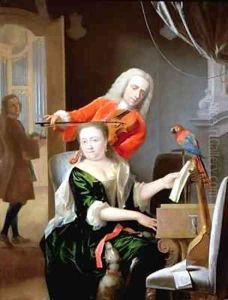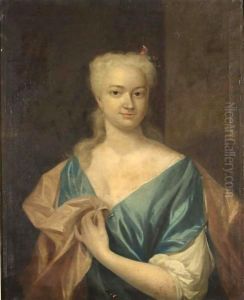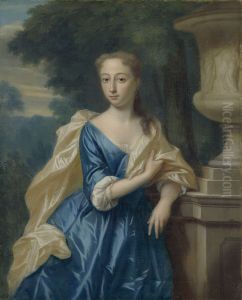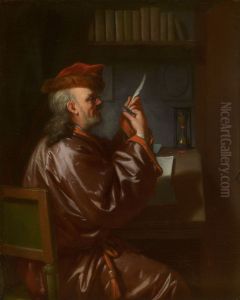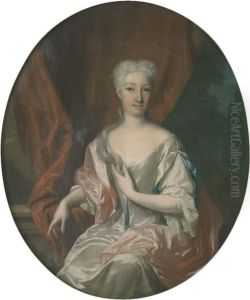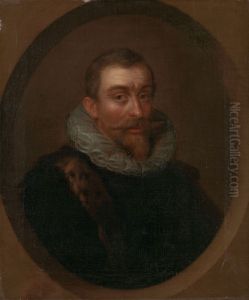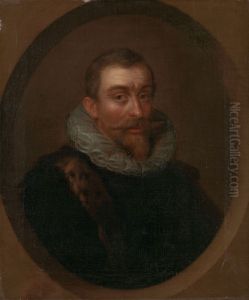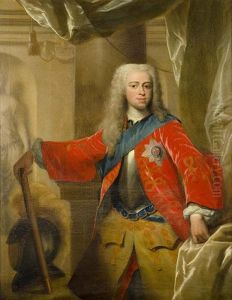Philip van Dijk Paintings
Philip van Dijk, born in 1683 in the Netherlands, was a notable painter during the Dutch Golden Age, a period renowned for its remarkable achievements in the arts, sciences, and trade. Although not as widely recognized as some of his contemporaries such as Rembrandt or Vermeer, van Dijk made significant contributions to the art of portraiture and genre painting, capturing the social and cultural nuances of his time with acute precision and a delicate touch.
Van Dijk's early life is somewhat obscured in historical records, but it is known that he was apprenticed to a local artist, which was the customary path for aspiring painters during this period. His talent quickly became evident, and he soon established himself as a master. In an era that celebrated detailed realism, van Dijk's work was distinguished by its elegance, expressive use of light, and the psychological depth he imbued in his subjects. His portraits were especially sought after by the Dutch elite, who appreciated his ability to convey both the status and the personality of his sitters.
Throughout his career, van Dijk remained largely in the Netherlands, contributing to the vibrant artistic scene there. He was a member of various artists' guilds, which played a crucial role in the career of an artist at that time by providing networking opportunities, commissions, and a platform for exhibiting their work. Van Dijk's genre scenes, depicting everyday life with a remarkable sense of intimacy and immediacy, also garnered him acclaim. These works, often set in domestic interiors, are celebrated for their meticulous detail and the subtle interplay of light and shadow, reflecting the influence of the Dutch master Johannes Vermeer.
Philip van Dijk's contributions to Dutch art were not limited to his paintings. He was also involved in the artistic community as a teacher, passing on his skills and techniques to the next generation of painters. His legacy, though perhaps not as prominent as some of his peers, remains significant for his mastery of portraiture and genre painting, which continue to be appreciated for their technical skill and emotional depth.
He died in 1753, leaving behind a body of work that, while it may not have achieved the widespread fame of some of his contemporaries, is valued by art historians and collectors for its insight into the Dutch Golden Age. His paintings are preserved in various museums and collections around the world, serving as a testament to his skill and sensitivity as an artist.
